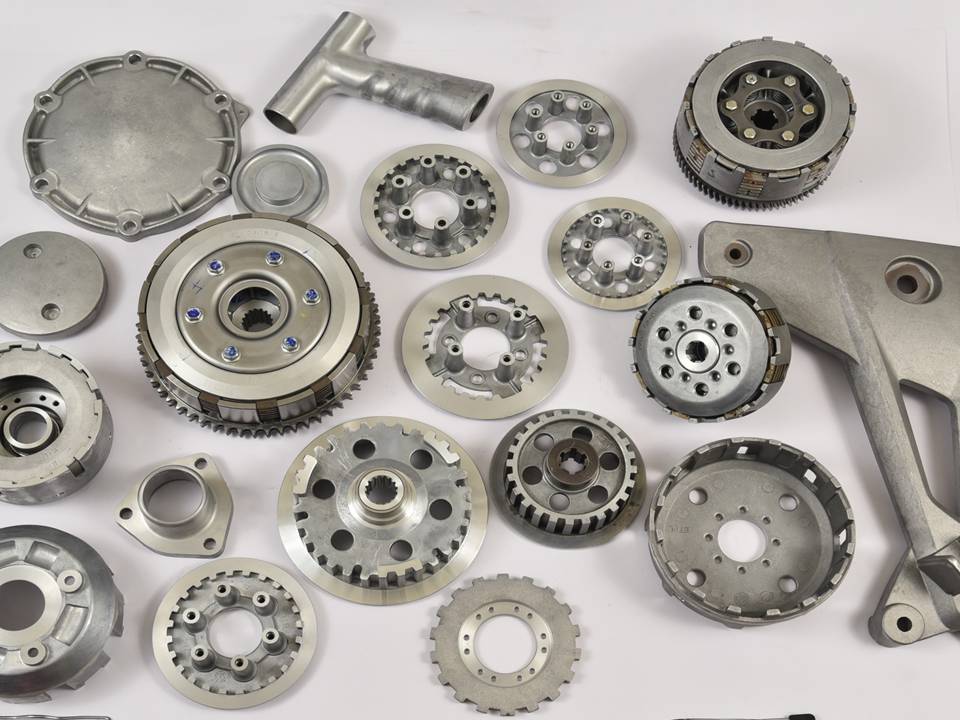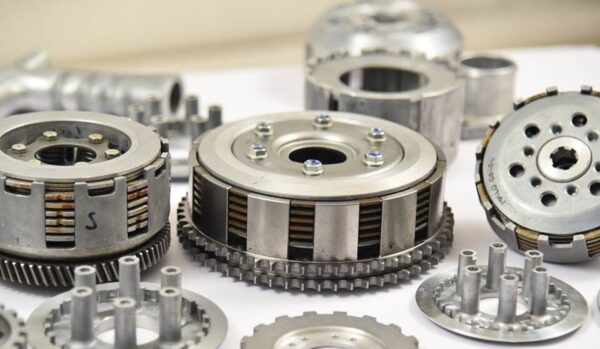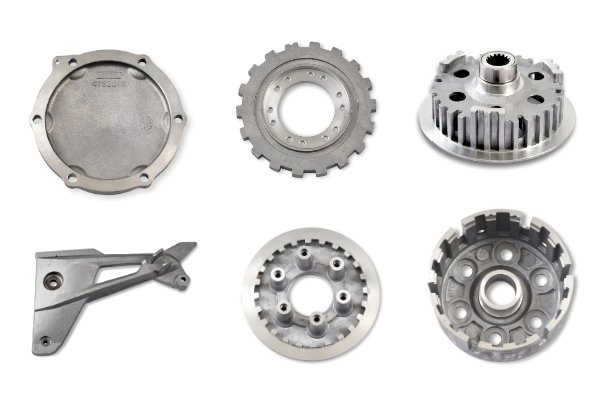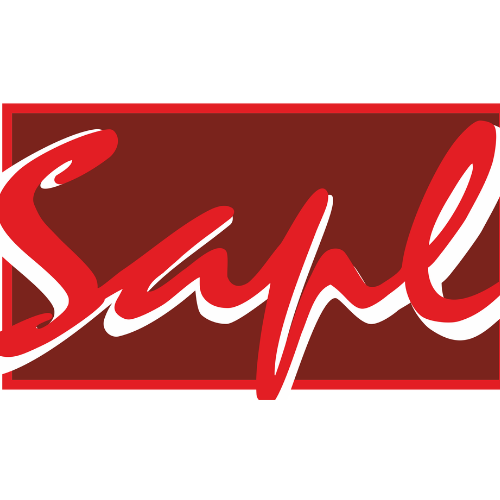The Ultimate Guide to understanding Aluminium High-Pressure Die Casting: What is Aluminium High-Pressure Die Casting?

Die casting is a manufacturing process for producing complex parts by forcing molten metal under high pressure into a mould cavity. The molten metal is then cooled and ejected or broken out of the mould to complete the casting process. The process is used to manufacture various parts, from relatively small to large and complex to simple.
The Die Casting Process explained!
Die casting is a metal casting process that forces molten metal under high pressure into a steel mould cavity. The mould cavity is created using two machined & hardened steel tool dies. Most castings are made of non-ferrous metals, specifically zinc, copper, aluminium, magnesium, lead pewter and tin-based alloys.
In aluminium die casting, depending on the type of metal being used and even the application of the cast, product design details will vary as well as the process. These processes & design guidelines are quite complex & need accuracy, which can be achieved by working closely with die casting foundry with expertise and technical know-how. The backbone of a die casting process are hot or cold chamber die casting machines, which we will understand in detail further in the blog.
“High Pressure Die Casting is a metal casting process used to create complex shapes with high precision. It is a process that uses high pressure to produce a cast.”
The process involves shaping metal by forcing it into a mould cavity of the desired shape. The cavity can be created using a die (hence the process name) or a tool. The molten metal is forced into the mould cavity using a high-pressure injection. This process is used to produce complex metallic shapes in large quantities.
The high pressure die casting manufacturing process is heavily used by the automotive industry to make highly complex components at an economical value. The parts created through the die casting process have high strength and resistance to wear & tear. This makes the die casted components highly preferred across various industries like industrial hardware, construction components, consumer goods, electrical goods, surgical goods, etc. You will find the application of die casting components almost in every industry. Especially the castings manufactured out of special aluminium alloys.

Why is aluminium alloy preferred for the die casting process?
Aluminium is the most widely used metal in the manufacturing of die castings. The cost-effectiveness of aluminium combined with its good corrosion resistance makes it the metal of choice for the majority of die casting products.
There are many other reasons for the preference of aluminium alloys in the die casting process. First of all, aluminium is easy to cast. It is soft, lightweight, ductile, has excellent machining capabilities and has a low melting point. These qualities make it very easy to pour molten aluminium into a mould. Aluminium is also cheap and is abundantly available along with excellent recyclability.
Aluminium is the preferred alloy in the die casting process due to the following reasons –
- Aluminium is lightweight
- It’s easy to cast
- It has a low melting point
- It is ductile
- It is soft
- It offers excellent machining capabilities
- It provides excellent recycling capabilities
- It is corrosion resistant
- It has an excellent thermal conductivity
- It has high electrical conductivity
- It offers superior strength & hardness
What makes aluminium pressure die casting the most popular manufacturing process?
Aluminium high pressure die casting is the most popular and widely used process to manufacture lightweight, high strength, complex & economical parts. Most OEMs find replacing parts manufactured with traditional material & processes with aluminium die casting profitable & operationally superior.
High pressure die casting is the most widely accepted process for producing parts in the automotive, electrical, surgical, consumer goods, aerospace, medical and electric vehicles industries. This is primarily due to its superior quality, easy procurement & timely delivery, aluminium die casting finds its application almost in every industry.
What are the steps involved in aluminium high-pressure die casting?
High-pressure die casting involves three primary steps:
First comes the injection phase, where the molten metal is lifted from the furnace by a laddle cup, poured into the shot sleeve, and then injected into the Die casting machine’s die cavity at a high pressure.
The second step is the holding phase, during which the molten metal after the injection phase is held in the Die tool at high pressure to retain the complex shape during the cooldown of the metal also ensuring no shrinkage in the part.
Finally, the last step of this process is the ejection, which is done by reducing the pressure, opening of the die cavity & removal of the die casting component with an automatic extractor & extraction pins.
What are the different types of high-pressure die casting machines available, and how should one decide the correct machine for a product?
There are several different types of die casting machines. They differ in size, power, method of cooling, moulding techniques and cycle time. You will find the application of a die casting machine in almost every manufacturing domain. These machines are used to produce small & large components of an engine, transmission parts, fan blades, fan hubs, industrial lights, motor bodies, gearbox bodies, battery packs and many others.
Nowadays, most OEMs use die casting machines in their manufacturing process or outsource it to an aluminium pressure die casting company.
“Choosing a die casting machine for your product is based on a variety of factors – The projected area of the casting, the weight of the casting, functional requirement, mechanical requirement, wall thickness & many other technical factors”
Generally, high-pressure die casting machines can be classified into hot chamber machines and cold chamber machines. Hot chamber machines have a pressure chamber connected to the mould cavity, while cold chamber machines do not. In a hot chamber machine, the air pressure difference is used to push the metal into the shot sleeve before applying the high injection pressure.
Whereas a cold chamber die casting machine requires an external furnace from which a ladle cup lifts the molten alloy, pours it into the shot sleeve, and then uses a piston and a ram to push the molten metal into the mould. Usually, the ram is controlled by a hydraulic system, and the size and shape of the casting depend on the size of the mould cavity and the clamping force of the machine.
How does a Die casting machine work?
A die casting machine functions through the application of fluid mechanics, mechanical & electrical energy. It’s a complex & expensive piece of equipment requiring trained operators & maintenance engineers.
A complete cycle of a die casting machine flows in the following manner:
- First, the auto-ladle (a cup made of ceramic or traditional metals with a robotic arm controlled with the PLC) lifts molten aluminium alloy from the holding furnace and pours it into the shot sleeve connected to the steel die tool mould. Simultaneously, the die tool is closed by the machine’s hydraulic system at high pressure, generally ranging from 800 Kn to 60000 Kn, depending on the selection of the machine.
- The second step involves the injection of the molten metal into the die tool cavity, generally in different phases. The first phase is called the injection phase or the slow shot stage. This is when the shot plunger moves forward at a very low speed to begin pushing air out of the sleeve and moves past the ladle pouring opening in the sleeve. Next, depending on the process set-up, the plunger enters an intermediate speed phase – as it speeds up to fill the runner system with aluminium as required. Once this is complete, the die casting machine enters a fast shot phase where velocity increases significantly to fill the part cavity with aluminium.
- The third step involves the solidification phase, where the die casting machine holds the die halves together at its rated tonnage. During this phase, the die tool is water or oil-cooled to remove heat from the molten aluminium. Simultaneously, the machine also maintains intensification pressure to minimize shrink porosity as the aluminium solidifies. After a prescribed amount of time (where the casting has sufficiently solidified and cooled), the pressure drops, moulds are opened, and the casting is ejected with ejector pins from the moving half of the Die tool.
- The fourth step involves a mechanical and electrical robotic arm extracting the casting out of the die tool & placing it on the extraction rack.
- After the ejection, an auto-sprayer sprays the moulds with water-soluble lubricants & air to maintain the temperature of the mould and prepare it for the next cycle. Henceforth, the cycle continues again.

How should you choose the correct die casting process for your product?
The answer lies in many different parameters – the required volume, technical design requirement of the product, the functionality of the product and investment capacity of the business owners.
We’re often asked to cast parts that seem incredibly simple but are often complex than they look. It’s also not uncommon for us to run into people from the purchase department who don’t know whether or not they need pressure die-casted parts for their requirement.
The design engineers, managers, production engineers & machining specialists at Sadguru Autocomponents come with over a decade of experience & a deep understanding of the entire design, development, and manufacturing process for a new die casting part. We can help you determine precisely what process is ideal for your product based on the available choices and the one which is economical.
If you are confused about whether die casting is the correct choice of process for your product, you can get in touch with our experts, who will help you with genuine pieces of advice. Please feel free to write to us at [email protected]
Now, let’s take a look at the advantages & disadvantages of aluminium high-pressure die casting. First let’s start with the advantages of High-Pressure Die Casting.
There are many advantages of die casting which can be spoken of. The economical benefits, superior quality, high performance, high accuracy, excellent surface finish and the ability to make complex components with different alloys. A design can be easily translated into a die-cast part too. Die-cast components are also highly cost-effective, and the process can often save time and costs while improving your product quality.
The advantages of aluminium die casting:
- Easy for Mass Production: Die casting is the ideal choice for high-volume production. The process saves time when creating large batches of identical parts. This means that you can move from prototype to mass production in a matter of weeks!
- Dimensional Accuracy and Stability: The components manufactured through Die casting process provide close tolerances and exceptional accuracy. They are also durable and heat resistant.
- Excellent Surface Finish: Die casting allows the product to have a high-quality surface finish at the die-casting stage itself, where surface RA value can range from 2-100 µm (0.5-2.5 µin). It reduces the need for machining operations for surface finish and, in some cases, can entirely eliminate it.
- High Mechanical Properties of Die Castings: Die casting is known for its incredibly high mechanical properties. The metal melt cools fast in the die casting process and forms a compact crystalline structure. As you can expect, this means both strength and hardness are off the charts! This happens because, under pressure, it’s hard for a disorder to propagate through the crystals as they develop.
- Parts of other Materials can be inserted into Die Castings: Complex fasteners or inserts can be inserted in the die-cast component at the die-casting stage enabling several benefits, including material and processing cost savings. The complex shapes of various parts can be obtained rather than manufactured from scratch, and performance can also be improved through this process. In addition, assembly processes are streamlined as a result.
- Weather Resistance & Corrosion Free: Cast aluminium offers resistance to weather, common atmospheric gases and liquids.
- Excellent Machinability: One of the many benefits of using aluminium castings in manufacturing is their excellent machinability.
- Thin Wall Thickness & Lightweight: Die casting is one of the most effective ways to create a thin yet sturdy product. It enables us to produce a product with low wall thickness up to 1mm, making the product lighter in weight without sacrificing precision & strength. Also, resulting in cost-saving.
What are the disadvantages of High-Pressure Die Casting?
The main disadvantage of high pressure die casting is its very high capital cost. The die casting machines, the required auxiliaries like furnace, robotic arms, the die tool and related peripherals are exponentially costly compared to other casting methods. Therefore, for High Pressure Die casting to be an economic process, a large production volume is required.
Other disadvantages of high-pressure die casting include:
- High Investment Cost: High-pressure die casting is often seen as an expensive production method because the initial tooling costs are usually higher for this process. Still, its ability to continuously produce long, uninterrupted runs of desired parts/products allows for the unit cost to be lowered amidst increased volumes in addition to yielding higher initial sales.
- Porosity: Unfortunately, high-pressure die casting is known for producing parts with pores. This makes them porous, which is a disadvantage when using them in heat-treating processes since the location of these pores leaves the finished product prone to surface blisters through air trapping. Obviously this can be avoided by various methods depending on the requirement of the user as these specialised processes to have zero porosity can add up to the initial investment cost. One such process is called vacuum assisted die casting.
- Not Suitable for Small Batch Production: The die-casting process is generally suited for large volumes. The die casting process isn’t likely to be cost-effective if you have a small number of products to be produced, due to the initial high tooling cost.
We hope you enjoyed our article about the Ultimate Guide to understanding Aluminium High-Pressure Die Casting. With this knowledge, we hope you have a better idea about the domain of high pressure die casting enabling you to increase your product quality and reduce production costs in your manufacturing process. If you have any other questions about the process, please don’t hesitate to contact us anytime at [email protected]
In this article, we have given a brief overview of what aluminium high-pressure die casting is. We have also covered some of the most common applications for this technique. Hopefully, you have found the article helpful and would like to learn more about this process. If so, please feel free to contact us, and our experts would be happy to help.
